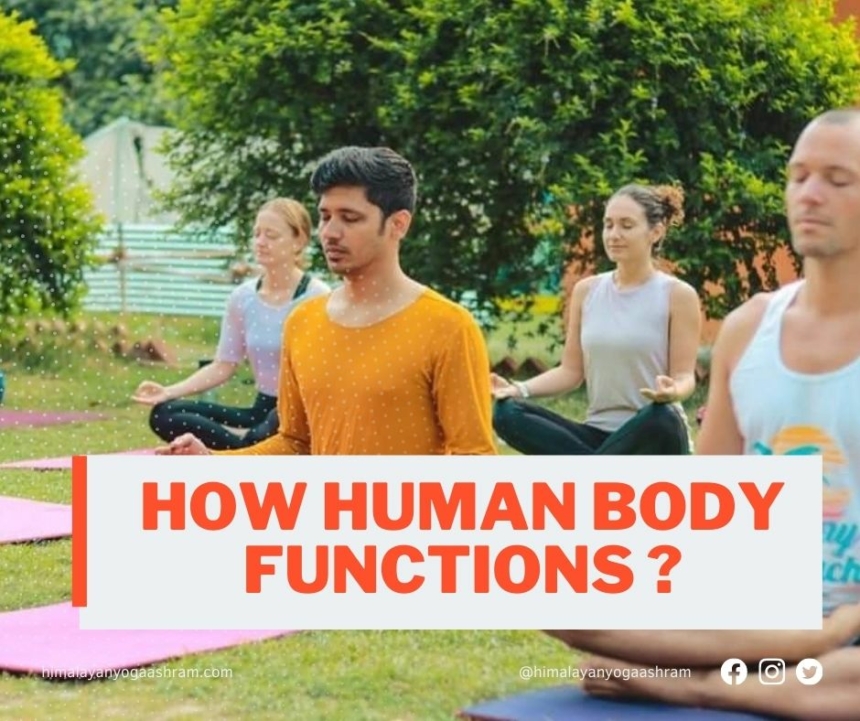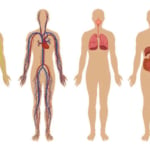How Human Body Functions | Himalayan Yoga Association
By Himanshu JoshiYogaThe human body is like a machine that is operated by a machinist. The machine functions properly when all its components are of excellent quality, are periodically checked; greased, oiled and fuelled, cleansed and divested from harmful elements, given proper rest and never run at a stretch. Its functional defects should be attended to immediately so that an error is nipped in the bud, keeping in mind that a stitch in time saves nine.
Timely action is cost effective, does not hamper production and also renders efficient service. When so much care is taken of an inanimate object, like machines, then even a lot of negligence towards the animate body, which is the very foundation of our survival and existence, is hard to comprehend. You can replace some parts in a defective machine and can also replace the same with a new one. But in the case of the body, replacement of organs or parts is not possible and, if any effort is made to replace the defective organs with artificial ones, the performance will be adversely affected, as no replacement can ever take the place of the original component.
At worst, one may have some semblance of original performance or say merely a makeshift device. Human body is a complex whole of many systems, working in perfect harmony, without ever being noticed, as the functions are performed in such a silent, meticulous and harmonious way that we are obliged to bow down, with reverence and gratitude, to the greatest architect (GOD) who designed such a fool-proof machinery which serves far more than it takes from us.
For the sake of convenience, the human body can be divided into the following sets of organs, which discharge their specific functions.
Nervous systems: All organs of sensation, brain, spinal cord, and peripheral nerves fall within its ambit. Its main function lies in giving directions to various organs of the body, sending warning signals, forewarning about the impending dangers and inducing the concerned organ to take preventive or remedial steps.
Skeletal System: It consists of the bony structure of the whole body which is generally called a Skeleton or a mass of bones. The bones help the body in giving it a perfect shape and form, to provide protection and support, besides acting as levers for movement of the body. Bones have the proficiency of flexibility so that they can help the body to let all the joints perform their respective functions, even under stress and strain. To keep the mobility of the bones and bone joints these contain cartilage, fluids, cartilages, tendons and sheaths, calcium, phosphorous, bone marrow, etc.
Muscles: Fleshy portion of the body that covers the entire skeleton is made up of skin that has muscles beneath it. Muscles help movement of the body and each muscle, attached to a particular organ, is nurtured by the bloodstream.
Integumentary System: Its purpose is to protect the body from invasions by outer enemies, injury, temperature regulation, dehydration etc. This system is in fact, a protective device of the body.
Digestive system: It is the largest system which is formed by the mouth, the cavity of the mouth, pharynx, oesophagus, stomach, intestines, rectum, anus, liver, pancreas and salivary glands.
Respiratory System: Nose, Nasal cavities, larynx, trachea, lungs and essential parts of the system.
Urinary System: It consists of kidneys, ureters, bladder and urethra which help to maintain regulation of blood composition, elimination of urine.
Reproductive Organs: This system is totally different in both males and females and helps in sexual acts, child birth, sexual enjoyment. In males, it comprises of testicles and bag which houses the testes, vas deferens, seminal vesicles, prostate gland, external genitals but in females, it consists of vagina, uterus, clitors, fallopian tubes, ovaries, labia majora and labia minora mammary glands. The system produces ova and sperm and sex hormones.
Circulatory System: Blood vessels and the heart form this system. A bloodless body is like a lifeless person.
Lymphatic System: spleen, thymus, lymph nodes, vessels and nodules. They are part of the immune system of the body. Lymphs cause the return of fluid to the circulatory system, clear up wasted and deadened cells from the body.
Immune System: It provides for defence mechanism of the body, by protecting it so that outer forces fail to harm. It defends against virus infections, parasites, foreign cells, microorganisms. It builds up general resistance of the body and in this process, it is ably aided by some cells of bone marrow, R.B.C.s lymph nodes, and spleen.






